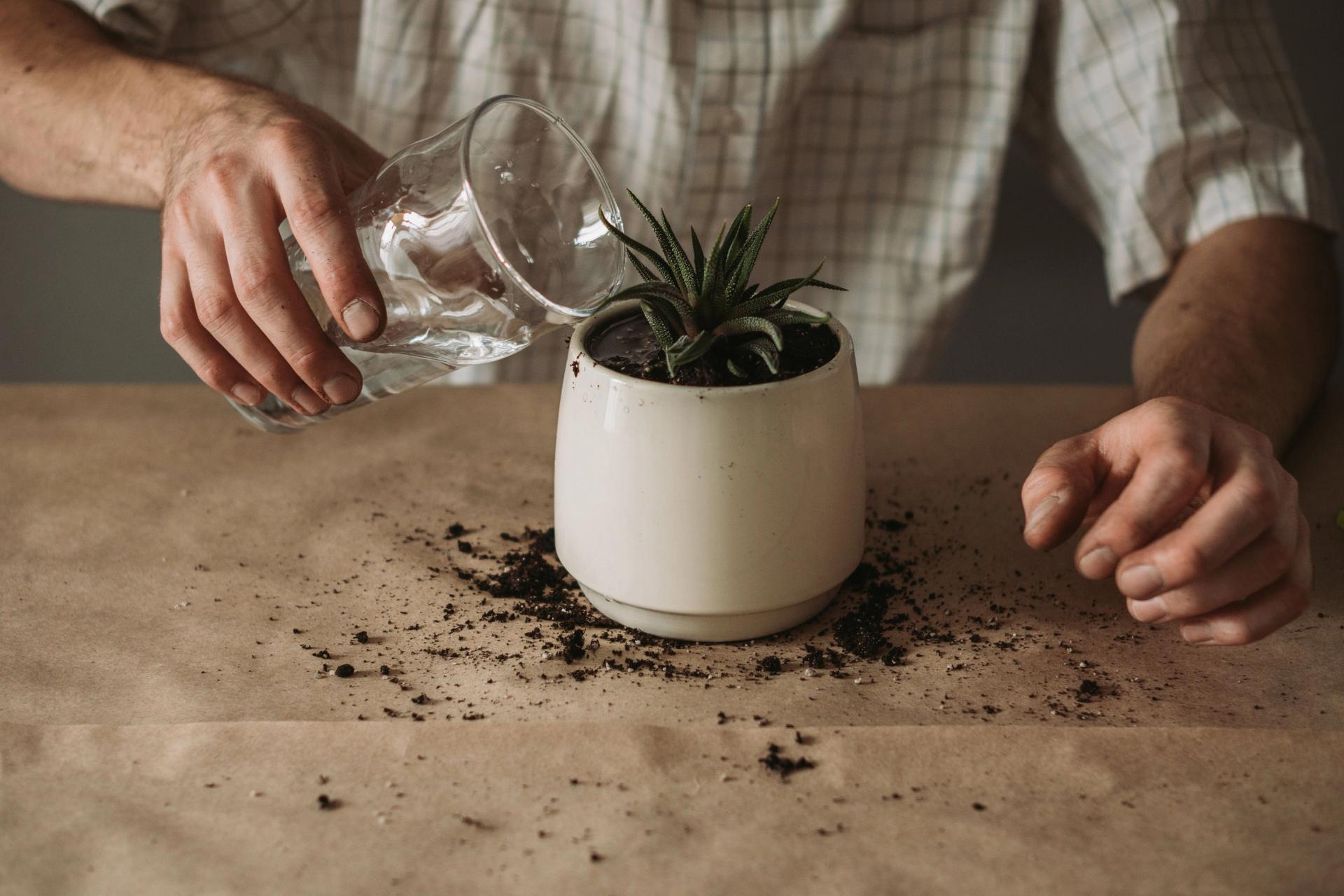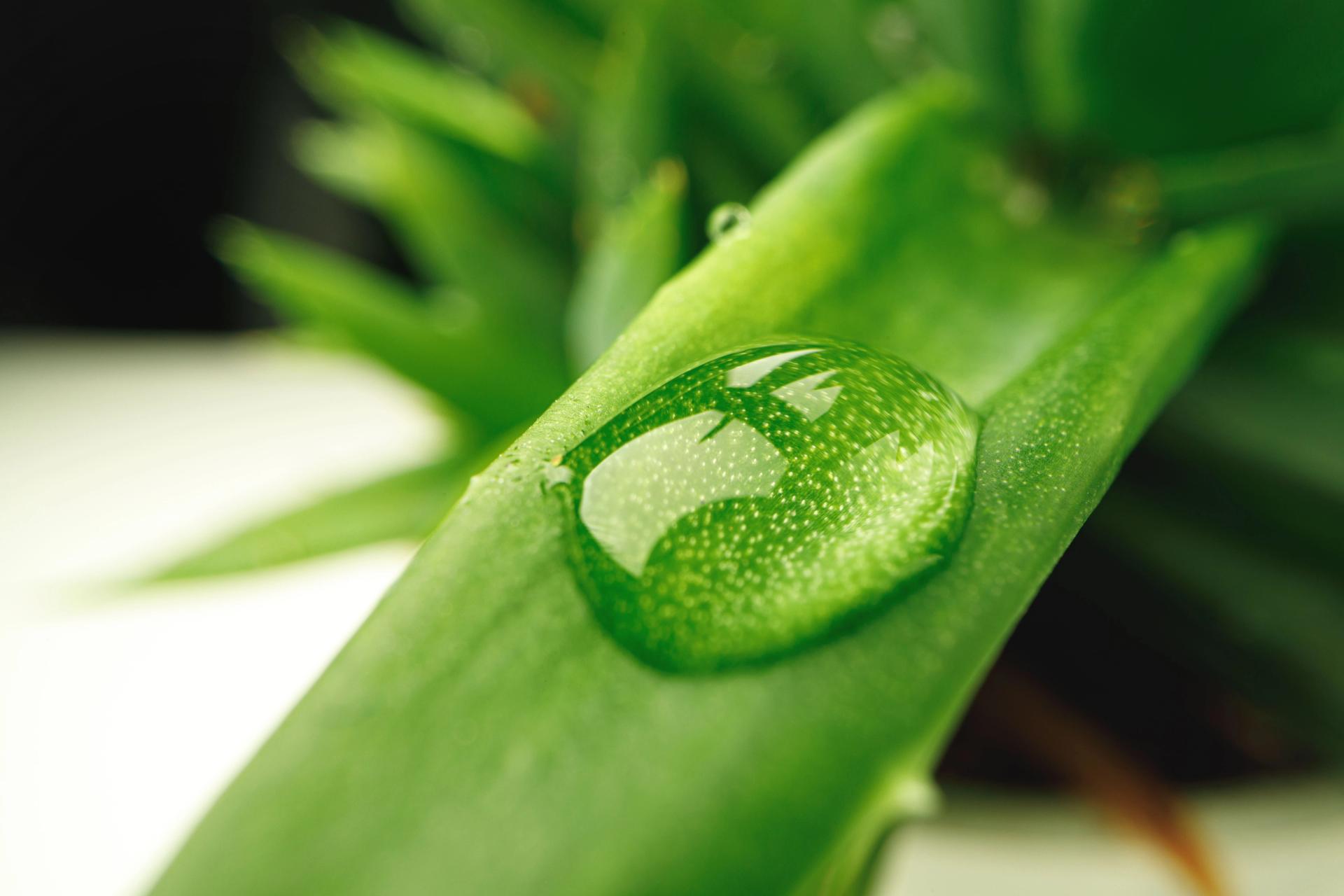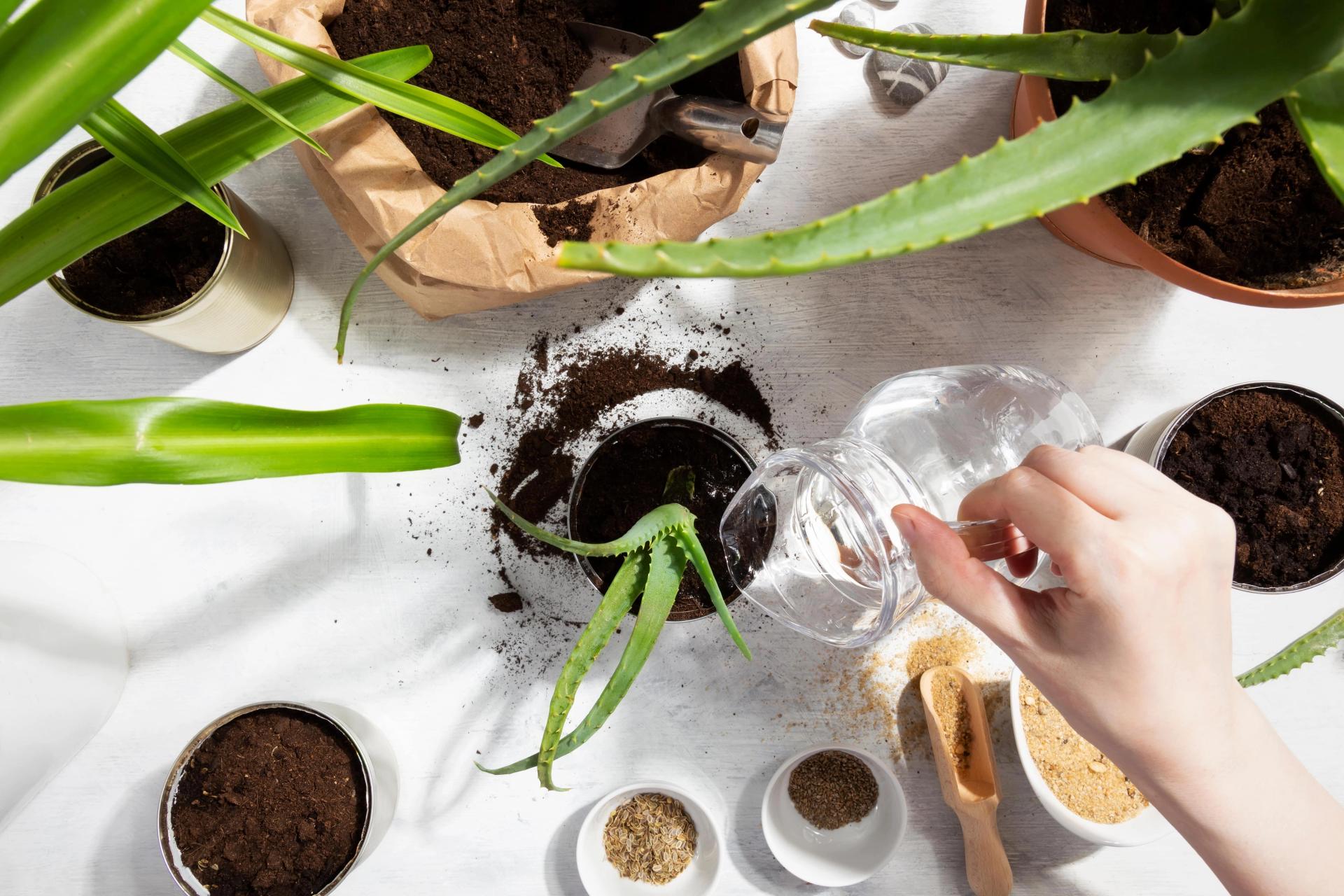Thinking about getting a succulent? Great choice — just make sure you know how to water succulents before bringing one home! They actually prefer a bit of neglect, and the trick is simple: soak the soil thoroughly, then let it dry out completely before watering again. No misting, no daily check-ins, just a deep drink every now and then.
We’ve all killed one by accident (usually with love and too much water). But once you get their rhythm, succulents are some of the easiest plants to care for. In this guide, we’ll break down all the secrets you need to know and answer some of the most common questions about these greenies' watering needs.

How Often Should You Water Succulents?
Succulents can go longer without water than most plants, but they still need a routine to stay healthy. If you’re wondering how often to water succulents, a good guideline is every 10-21 days (1-3 weeks), though the exact timing depends on the season and your plant’s size. In summer, they may need water weekly, while in winter, once a month is usually enough. Thick, fleshy leaves hold more moisture and last longer, while smaller or thinner leaves dry out quicker. Signs your plant is thirsty include soft, wrinkled, or droopy leaves.
To be sure, check the soil by sticking your finger 2 inches (≈5 cm) deep or use a moisture meter. If it’s completely dry, it’s time to water. When you do, soak the soil thoroughly until water drains from the pot, then wait until it’s fully dry again before watering. This cycle keeps your succulents firm, plump, and safe from root rot.
How to Water a Succulent
If you’re unsure about how to water succulent plants, the trick is to give them a deep drink rather than frequent sips. Water until you see some draining from the bottom of the pot, then leave the soil to dry out completely before watering again. This cycle mimics the natural conditions succulents are used to. Try to focus on watering the soil, not the leaves, as moisture sitting on foliage can lead to rot. A small-spout watering can or even bottom-watering works well to get the moisture right where it’s needed.
What Is the Best Way to Water Succulents?
Now that you know the basics, what’s the best way to water succulents? Many growers recommend pairing the soak-and-dry approach with bottom watering. This lets the roots pull in water evenly without leaving the top leaves damp. To make this method effective, choose a pot with drainage holes and a fast-draining soil mix so extra moisture doesn’t hang around. By watering at the base instead of overhead, you’ll keep your succulents healthy and reduce the risk of fungal issues.
How to Know When to Water Succulents
Brief information about succulents: almost all of them have liquid-filled stems and leaves. And they look like that because of the natural environment of succulents and cacti – the deserts and arid locations. The plants absorb the moisture in anticipation of the next rain because it is difficult to get water in the desert climate.
So imitate a desert way of watering for your plants, make it similar to a prolonged drought and then heavy rain, which will allow them to drink and absorb the necessary amount of water. Do not be afraid that the land is dry for some time, succulents are accustomed to this. So as an ideal, these plants need a lot of water, but rarely. In fact, the amount depends on the size of the plant.
How Much Water Do Succulents Need (Per Week)?
Succulents don’t need a strict weekly schedule. Water them thoroughly whenever the soil is completely dry. How often this happens depends on pot size, soil, and light, but generally, small potted succulents need water every 1-2 weeks, while larger pots or cooler spots may need less.
It is better to collect water in a watering can so that it is infused and reaches room temperature, or use a filtered one. It's essential to water the succulents abundantly so that water flows out of the drainage holes. However, succulents usually grow in small pots alone or together in one large pot.
Light watering with drips or spoons sometimes causes the roots to stretch upwards for water. This will harm the plant. So focus on the size of the pot and fill it completely, try not to fall on the leaves, and pour it into the soil. Ensure that the ground absorbs moisture quickly enough – choose potting mixes for cacti.

How to Water Succulents Step-by-Step?
Based on the principles we mentioned above, here’s our step-by-step instruction for watering succulents. These tips will help you understand how to properly water succulents so they stay healthy:
- Remember the main rule; you should water the soil, not the leaves.
- Prepare water as it has to be clean and at room temperature.
- Choose a watering tool that will purify the water. For example, a watering can or syringe, a bottle with a narrow neck.
- Fill the plant with water until the water drains through the drainage hole.
- Remove the water from the pot saucer.
- Alternatively, place the pot in a tray of water and wait until the top layer of the substrate is moist.
List of Succulent Watering Tips
You can keep these tips and return to them until you remember the basic rules of watering:
- Accurately check for moisture by sticking your finger an inch deep into the ground. Alternatively, use a toothpick to check the soil. If it turns out dirty, the soil is still moist.
- Drainage holes are required. Without them, root rot is inevitable. Often empty the drainage tray under your pot.
- Tap water can cause minerals to build up in the soil. If you use it, transplant the succulent into a new potting mix every year.
- If you group different succulents together, keep in mind that they may have different watering needs. Focus on each plant.
- Do not use a sprayer unless you like water stains on the leaves.
What Are Pitfalls When Watering succulents?
- The substrate is as important as watering. Even if you water your plant correctly, a mix that holds moisture too long can still lead to root rot. We’ve talked a lot about the importance of drainage, but you might also be wondering how to water succulents without drainage – we’ll get into that a little later.
- Succulents may seem to like spraying, but this is not the case. They want to absorb water only through the roots.
- Water the succulent if you plan to leave the plant for a certain time. Water the plant twice is better than leaving it dry.
- Try to water succulents in the evening. These plants use a form of photosynthesis called CAM (Crassulacean Acid Metabolism) and halt their water uptake during periods of intense sunlight and heat.

What are the signs of overwatering succulents?
- It's easier to save an underwatered succulent than to keep alive an overflowed one. The main signs of succulent overwatering:
- The leaves begin to fall off and may crumble from touch.
- Brown or yellow spots appear on the tips of leaves or stems.
- The leaves appear swollen, become soft, and lose elasticity.
- Root rot begins. The primary signs of overwatering can be observed in the bottom leaves sooner than at the top of the stem.

FAQ
Do Succulents Need Drainage?
Yes, they love it! Use some drainage in a pot for your succu. It's critical for succulent plants to get rid of excess water. Hence, a pot with drainage holes is significant. Growing succulents in pots without drainage holes makes watering harder.
How Long Can Succulents Go Without Water?
Succulents are hardy and can usually last anywhere from a few weeks to a few months without water, depending on species, size, and environment. Indoor plants may survive longer. If you’re heading out, give them a good, thorough watering beforehand to keep them healthy while you’re away.
How to Save an Overwatered Succulent?
Remove the plant from the substrate; pay attention to the roots. Remove all the rotten leaves and check the stem for signs of rot. If root rot is already present, change the potting mix and cut off the roots. Use healthy leaves and parts of the stem for propagation.
How to Water Succulents Without Drainage?
For pots without drainage, water sparingly and always target the soil, not the leaves. Let the soil dry completely between waterings. Adding a layer of stones at the bottom helps prevent standing water, and keeping your succulent in bright light with good air circulation will help it thrive safely.
Should You Mist Succulents?
If the plants still do not have fully formed roots or when the air becomes dry from batteries or heat, they can be sprayed. In other circumstances, succulents shouldn’t be misted since they have a special wax layer on their leaves, and it might be damaged by the water.
